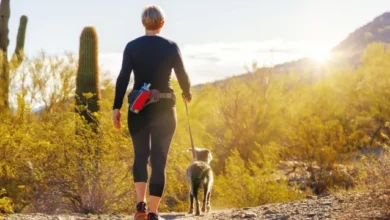
Dogs are special creatures. They influence children’s emotional, social, and cognitive development, and positively impact the lives of their owners. They provide companionship and promote an active lifestyle for thousands, so much so that 38% of US households home a dog.

Dogs are important to their owners’ health and wellbeing. However, as a dog owner, it is important to know that all dogs, which include puppies, may sometimes carry or contract life-threatening diseases. Do you want to know the signs to look out for? Here are some of the common diseases in dogs.
Read More:
- 5 Common Health Issues in Dogs
- Dog Food and Nutrition Tips: Keeping your dog’s coat shiny and happy
- 5 Benefits of Coconut Oil for Dogs
- How Does Low Carb Cat Food Help My Feline?
- 5 Reasons Why Your Dog is Losing Weight
Gum Disease
Start oral health care when your dog is still a puppy. And you can help prevent gum disease later in life with professional cleanings, at-home brushings, or from your veterinarian.
Plaque and tartar, containing bacteria, on your dog’s teeth may spread under the gums. If this happens, the infection can breed under the gums because the bacteria can separate the gums from the form pockets and teeth. Leaving gum disease untreated can lead to more serious symptoms, including blood infection or bone loss.
Kidney Disease
The kidneys of dogs work the same way as humans’ kidneys. They prevent toxic buildup by removing waste. Dog’s kidneys, not performing correctly, might be poisonous.
Kidney malfunction is caused by normal aging, a ruptured bladder, or kidney stones. Take the dog to your veterinarian as soon as possible if you see uncharacteristic accidents in your home or if your dog starts taking a large amount of water and urinating frequently.
Diabetes Mellitus
The pancreas makes insulin, which helps to move glucose into the body’s cells from the body. The body’s cells use glucose for energy. However, poor functioning or poor production of insulin can cause diabetes.
Diabetes usually occurs in dogs that are more than eight years old. Diabetes is more common in female dogs and it can be hereditary. The breeds prone to diabetes include Miniature Schnauzers, Toy Poodles, Pugs, Cairn Terriers, and Samoyeds. However, diabetes can occur in any breed.
What are the diabetes symptoms in dogs to watch for? Slow-healing cuts or bruises, blurred vision, recurring infections, irritability, weight loss, increased urination, and frequent thirst. Take your dog to your veterinarian if you see one of these signs. The veterinarian can help rule out diabetes and other ailments.
Cancer
Unfortunately, cancer is the number one disease killing our dogs. How do you detect cancer in your dog? You just feel for lumps when petting your dog. Also, you can watch for bleeding from the ears, nose, or mouth or slowly healing sores. Catching cancer early can lead to successful cancer treatment. That is why it is important to talk about this with your veterinarian.
To keep your dog healthy, take your dog for regular wellness checks at your veterinarian, and take care of your dog with lots of exercise and proper nutrition.
Monitoring the health of your dog can help you protect your dog from one of these harmful diseases. Here is how to monitor your dog:
- You can prevent infectious diseases and keep your dog healthy by taking your dog to regular veterinarian checkups
- Ask your veterinarian about preventive treatments for heart-worms, ticks, fleas, and other parasites.
- Clean up any dog vomit, poop, or urine in your house as soon as possible, and properly disinfect the area. Wear disposable gloves, and wash your hands thoroughly after cleaning up and disinfecting the area.
- If you notice any signs of illness in your dog, call your veterinarian. It is important to remember that dogs who seem healthy can still spread germs to other animals and people.
Keep in mind not every environment is safe for your dog. For instance, having an abundance of wildlife in your backyard can cause more harm to your dog, and you might not realize it. Many pests and wildlife carry diseases, including rabies and distemper, so they can transmit these diseases to your puppy. If you did not fully immunize your puppy at a young age, it can be extremely susceptible to these diseases.
Many wildlife carnivorous species, like wolves, coyotes, weasels, otters, foxes, skunks, raccoons, and even mink, carry Canine Distemper Virus (CDV). That is why CDV is more common in wildlife. CDV spreads through the excretions and secretions of infected animals. Your dog can breathe them in because CDV can be spread as airborne particles. The good news is once the virus is out of the animal’s body, it does not survive for a long time.
Rabies is also passed through secretions; however, it spreads as a result of a bite from an animal carrying the disease. All mammals can carry rabies, but the common animals carrying them are foxes, raccoons, skunks, and bats.
The following are some other diseases that your dog might pick from wild animals in your backyard.
Leptospirosis
Leptospirosis, a bacterial disease, affects humans, companion animals, wildlife, and livestock. The symptoms of this disease may vary. However, the most common symptoms are vomiting, lethargy, and fever. Delaying treatment or even leaving the disease untreated can lead to death.
Tapeworms
If your dog eats a flea containing tapeworm eggs, it becomes infected with tapeworms. Your dog may accidentally ingest fleas when chewing or licking its skin. The intestine of your dog digests the flea, allowing the tapeworm to hatch. Once the tapeworm hatches, it anchors itself to the intestinal lining.
Giardia
Giardia, a parasite, lives in the intestines, and the animal passes it through the feces. It can cause diarrhea and cramping called Giardiasis in some animals and even humans. The Giardia parasite contaminates anyone that comes in contact with the feces from a person or an animal with this parasite.
The frequent carriers of Giardia are wildlife, which includes rodents, coyotes, deer, muskrats, and beavers.
Protect Your Dog
Our precious puppies cannot verbally tell us what is wrong. That is why it is important to watch for physical distress signals. You can find more information on potential diseases from wild animals at www.pestanimal.com. Keep an eye out for any symptoms, and take action as soon as possible if you see your dog is not acting like himself.
Popular Posts:



